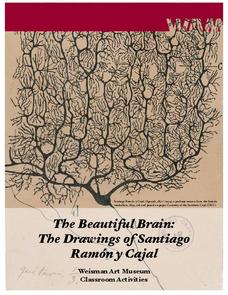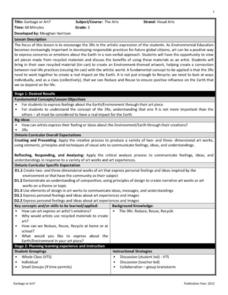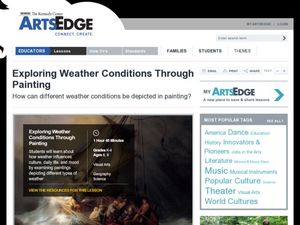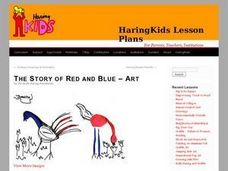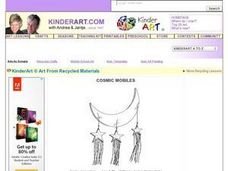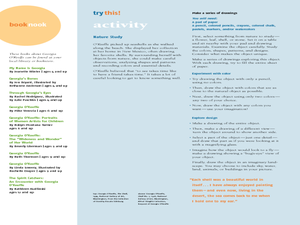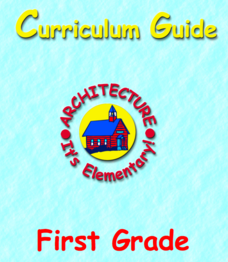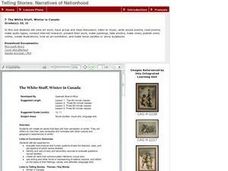University of Minnesota
Beautiful Brain: Strangest Dream
Do words change or add meaning or interest to a work of art? The final activity in a four-part series on the beautiful brain as a work of art focuses on art analysis. Scholars write a story about exploring art from the inside....
Curated OER
Crazy for Cubes: Art and Science
Learners discuss Sol LeWitt and conceptual art, then analyze the differences in expressing a concept through model-based inquiry and aesthetic art criticism. They develop a geometric, scientific, or mathematical concept, then create an...
Curated OER
Get Crafty! Integrate Art and Science
By combining diverse subjects, you will create some of your most memorable lessons.
Big Kid Science
Create Dynamic Art Using the Eclipse!
What happens to light as it passes through a hole? This is the main question centered around the designing of a solar eclipse dynamic art piece that uses a solar eclipse and paper to create a pinhole projection of the art.
Curated OER
Stamp Boxes or Jars: Recycled Art
With some canceled stamps, an old box, and some glue, learners create art from scraps. You save up or gather used postage stamps, the kids glue them onto a box or an old clean jar. All the steps needed to complete this project plus two...
Curated OER
Nature Art
In this nature art lesson, students take a nature walk and collect items with different sizes, textures and colors. Students use the items they collect to make a collage.
Curated OER
Garbage or Art?
The three R's are, reduce, reuse, and recycle. Third graders use recycled materials to design and create an environmentally themed piece of art. They discuss and examine major art works that were created using recycled materials, then...
Curated OER
Recycling With Art
Students create works of art from recyclable materials. In this visual arts activity, students investigate works of art created from recyclable materials. Students choose an emotion to convey and then create an art piece from materials...
American Museum of Natural History
Create a Compass
Historically, humans have used many methods of finding due north. Using a hands-on activity, learners create their own compasses. They then test their compasses in their neighborhood or to assist with stargazing.
Curated OER
April Showers Raindrop Painting
I love this idea! After discussing rain, spring, and the weather, take your class outside and let nature do the painting. They shake power paints and glitter onto a piece of heavy construction paper, then take their paper outside and...
Curated OER
Exploring Weather Conditions Through Painting
Your advanced class will paint a picture of a particular weather condition. In this painting lesson students describe elements of art in pieces of artwork. They analyze the weather and seasons in the artwork. The students use paper,...
Curated OER
Observe Earth Day with Art Projects Made from Recycled Materials
Creative hands-on art project ideas that are easy on the earth and easy on a teacher’s budget.
Curated OER
The Story of Red and Blue: Art
Students identify art history by examining a list of images on-line. In this painting lesson plan, students identify the work of Keith Haring by researching the Internet and discuss his style of artwork. Students utilize computers,...
Curated OER
Cosmic Mobiles: Recycled Art
If you have a little left over tinsel and aluminum foil, your class can create these fun moon and star mobiles. Poster board or recycled cardboard become your moon and stars; the tinsel gives them sparkle. This would be a great...
Curated OER
The Beautiful Works of Georgia O'Keefe
Students discover the art of Georgia O'Keefe. In this art history lesson, students investigate the influential power nature has on art. Students create their own works of art by observing local nature.
University of Minnesota
Beautiful Brain: Do You See What I See?
Can art play tricks on your eyes, and can a still painting really appear to vibrate? The second lesson in a four-part series discusses the way our beautiful brains translate visual images. It highlights the style of optical art and...
American Institute of Architects
Architecture: It's Elementary!—First Grade
Build an interest and appreciation for architecture in your young learners with this fun 10-lesson art unit. Engaging children in using their five senses, the class first observes the environment around them, paying...
Art Institute of Chicago
Color Combinations
Explore color through an examination of pointillism and light. Class members view Georges Seraut's famous painting on a computer, zooming in and out to see the details and effects of the technique. They then cover how light and color are...
TED-Ed
Bringing a Pop-up Book to Life
Breath life into the pages of a text with this instructional video on creating pop-up books. From choosing a topic, through the planning and creation phases, this video examines how to develop engaging visual...
MENSA Education & Research Foundation
Hurricanes
Learn the ins and outs of hurricanes through a series of lessons answering, "What is a hurricane? How does it travel? How is one formed, measured, and named?" Information is presented through informative text and images, while...
Curated OER
The White Stuff: Winter in Canada
Canadian winters, and its residents ways of dealing with winter are the focus of this four-lesson sequence. It them, high schoolers create works of art that reflect their perceptions of winter. They study how Canadian's have incorporated...
Curated OER
Water Works
Students create a "water web" to illustrate the interdependence among water users and producers. They distinguish between direct and indirect uses of water; illustrate the interconnectedness of water users in a community; and demonstrate...
Curated OER
Through the Looking Glass
An engaging and ambitious series of four lessons invites high schoolers to view art work, have group and class discussions, construct time lines, compile photos, and conduct research. Learners share their experiences, create...
Curated OER
Science and Art Museum
Imagine each one of your learners on task and interested in scientific material. Learners investigate science related art by creating a small museum! Using digital cameras, pupils photograph different scientific actions that look...
